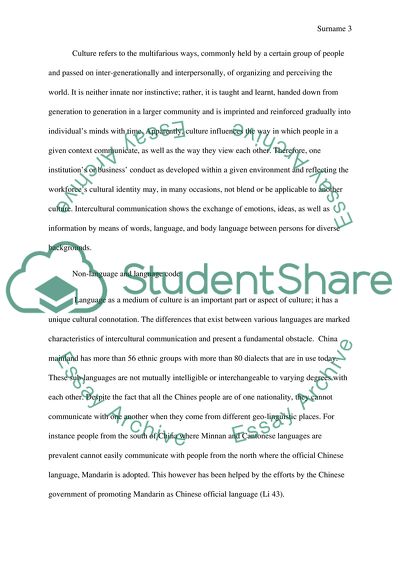Cite this document
(Intercultural Communication Practices of China-US Comparison and Contrast Essay Example | Topics and Well Written Essays - 1750 words, n.d.)
Intercultural Communication Practices of China-US Comparison and Contrast Essay Example | Topics and Well Written Essays - 1750 words. https://studentshare.org/journalism-communication/1832960-intercultural-communication-practices-of-chinausa-comparison-and-contrast
Intercultural Communication Practices of China-US Comparison and Contrast Essay Example | Topics and Well Written Essays - 1750 words. https://studentshare.org/journalism-communication/1832960-intercultural-communication-practices-of-chinausa-comparison-and-contrast
(Intercultural Communication Practices of China-US Comparison and Contrast Essay Example | Topics and Well Written Essays - 1750 Words)
Intercultural Communication Practices of China-US Comparison and Contrast Essay Example | Topics and Well Written Essays - 1750 Words. https://studentshare.org/journalism-communication/1832960-intercultural-communication-practices-of-chinausa-comparison-and-contrast.
Intercultural Communication Practices of China-US Comparison and Contrast Essay Example | Topics and Well Written Essays - 1750 Words. https://studentshare.org/journalism-communication/1832960-intercultural-communication-practices-of-chinausa-comparison-and-contrast.
“Intercultural Communication Practices of China-US Comparison and Contrast Essay Example | Topics and Well Written Essays - 1750 Words”. https://studentshare.org/journalism-communication/1832960-intercultural-communication-practices-of-chinausa-comparison-and-contrast.


